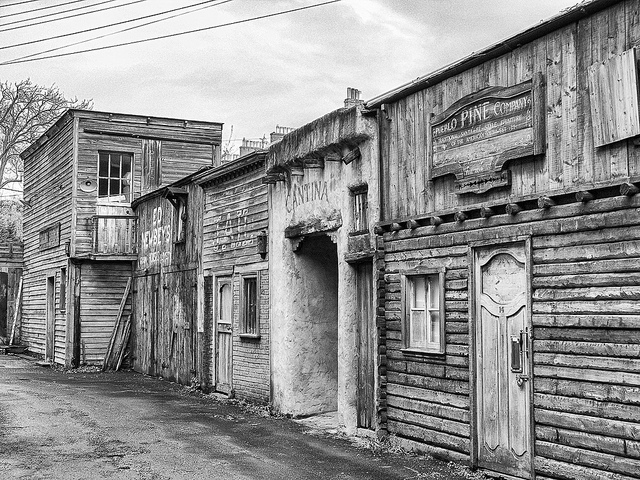No More Ghost Towns

Imagine for a moment that you serve on the guest service team at your church. You show up faithfully each week. You attend your Sunday School class, and the moment class is over you start serving. You grab your name tag and head for your spot. You flawlessly execute the plan handed down to you by your team leader.
Every week, like clockwork: Sunday School ends at 10:45. In place by 10:48. Shake hands, hand out bulletins, hold the door, smile, greet, connect, engage. Service starts at 11:00. Take care of the stragglers until 11:04. In the pew by 11:05.
And the vast majority of churches would be grateful for a faithful, dependable, set-their-watch-by-your-service volunteer. As well they should be: it’s hard to get good help these days!
But take another moment and imagine you’re not a volunteer who serves guests, but rather you’re the guest. And imagine you’re checking out a local church for the first time. You’ve researched it online. You’ve figured out the quickest route from your house. You know what time the services start and what sort of doctrine the church holds.
And on the morning you’ve planned to attend for the first time, chaos reigns: kids won’t get out of bed. Your six year old spills milk all over the floor. The shirt you’d planned to wear has a stain. World War III breaks out in your marriage. The baby has a blowout as soon as you get in the car.
You had a plan to leave in plenty of time, but you got a late start. The good news is, you won’t be terribly late. In fact, you roll in the parking lot at 11:06.
There’s only one problem: where do you park? Which door do you enter? Which way do you go to find the kids area? Where’s the auditorium?
There’s a glaring issue that surrounds those who faithfully serves for the first five minutes of the service: what happens when a guest arrives at minute number six? Do they intuitively know where to park, where to walk, and where to find the restrooms? Or are they showing up to a virtual ghost town, not seeing any human life forms until they stumble their way into the auditorium and find themselves facing the backs of 400 heads with a worship service already in progress?
I’ve found that people who are late are usually those who are most in need of a good first impression. They need a friendly face, clear direction, assurance that they’re in the right spot, and a helping hand to get from the street to the seat. They need someone who knows the open parking spaces and the open spots in the pew. They need someone who has planned the experience and gone before them in order to make the morning as smooth as it can be. They need someone to live the gospel in order that they may hear the gospel.
If you’re a leader at your church, I’d encourage you to take a walk this weekend. Set a few alarms for five minutes after the service begins, 15 after, 30 after, 45 after. And in those moments, wander out to the lobby, to the entry doors, to the sidewalk, and to the parking lot. Do you see greeters ready to greet? Or do you see a ghost town that is devoid of life?
Maybe more important than what you see…what do your guests see?

Danny,
As usual, you have raised an excellent point. You have nailed so many Guest Experience practices that you should be a carpenter!
Really, this is probably the number 1 deficiency I find in the churches I work with. I experienced it at a client yesterday during my onsite evaluation, and will be discussing it with them tomorrow in our presentation.
We have to remember that Guests run on their schedule, not ours.
Thanks Bob! Sentence #2 is going on my business card. The last sentence, I’m going to steal and use as my own. 🙂
Kudos to you for running an onsite consultation during Monsoon 2015 yesterday!